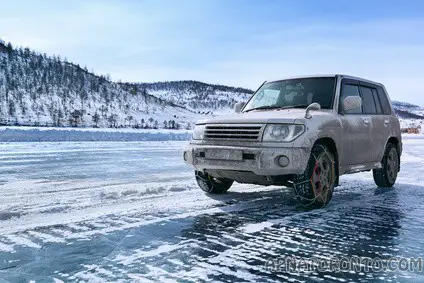Winter will be here in no time at all. This is the time to prepare yourself for winter driving. Winter weather also means that there will be more car accidents, partly caused by drivers who do not prepare themselves for driving in the snow and ice.
You should get a head-start on preparing for winter driving so that you know exactly what to do. There are quite a few easy tips to make sure that your vehicle is winter-ready so you can help yourself hopefully prevent an accident.
If you live in Canada or the upper half of America, this information can save your life.

Preparing Your Car for the Winter
Here are some easy tips to help you get home safe after driving in snow and ice and in the cold temperatures:
- This is an important tip that you should always keep in mind. You should always ensure that you top off your antifreeze before you drive out in the snow and ice. But you should only have to do this once or twice per winter. You do not have to check this fluid every week.
- You should also make sure that your wiper blades are in solid working condition. If they are wearing out or damaged, install new ones before snowfall actually starts.
- Always have washer fluid in your vehicle to fill it up. Also, always keep an extra bottle so that if you happen to run out, you know have a spare bottle on hand.
- Check your tires. Do this with one of the oldest tricks in the book – stick a penny into the tire tread head first. If you can see Lincoln’s head, it is time to get your tires replaced. Worn tires can be dangerous when driving in the snow and ice, so do not neglect them.
- Check the air pressure in your tires. You should do this once a month using a pressure gauge. Your vehicle’s owner’s manual or tire information label will have the correct tire pressure. You can also check your tires at a dealer’s shop.
- Make sure that your battery is fresh and clean at all times. If you have had your battery for more than three years, you should get it tested by a technician or mechanic.
- You should also check your oil on a regular basis (three times a year depending on how much you drive). According to experts, you should get your oil changed every 5,000 miles or around twice a year depending on how much you drive your car. You should keep this mind before winter sets in so that you are safe while driving.
- Keep an emergency kit in case you get into an accident or any other type of emergency situation. The kit should include a medical first-aid kit, bottled water, blankets, jumper cables, a flashlight, flares, candles and matches, a shovel and some healthy snacks.
Safety Tips for Winter Driving
A lot of people do not know what to do when they have to drive through inches of snow or come face to face with black ice. Here are a few safety tips for such situations:
- If you find that you are skidding and losing control, keep in mind that you can control skids if you know how to handle them. If your rear wheels skid, steer in the direction that you want your front wheels to go. If you have ABS, apply steady pressure while with standard brakes, gently pump them. As the skidding occurs, the vehicle will slow down, and traction will return. Steer in the direction you want to go then put the vehicle in drive and accelerate as gently as possible.
- You should never underestimate how slippery roads can be. Even if it is not freezing or below, do not assume that there is no road slipperiness. Ice can form on roads at any point of time when temperatures drop to 40 degrees, especially on windy days.
- Anticipating black ice can help you avoid accidents during winter. Beware of underpasses, bridges, intersections, and shaded or low areas like expanses of landscape. These areas usually have ice lurking, which might look deceptively dry or only slightly wet.
- If road conditions and visibility are poor, you should slow down your driving. This is a simple tip that can save your life, as well as your passengers if any.
- When you are driving on roads with snow and ice, there is an important tip to remember. Increase your following distance between cars by at least one vehicle.
Driving in the winter can be dangerous, but necessary – you have to survive and live your life. You need to commute to work, run errands, and so forth so it is not something you can avoid. However, with the tips mentioned above, you can ensure that you are as safe as possible every time you are behind the wheel.
Also, remember that the regular rules of safe driving always apply, even in the winter – so make sure that you follow them. If you maintain your vehicle properly and follow safety tips at all times, you can make sure that you avoid getting into an accident because of snow and ice and keep you and your family safe throughout the season where Mother Nature is at her worst.
